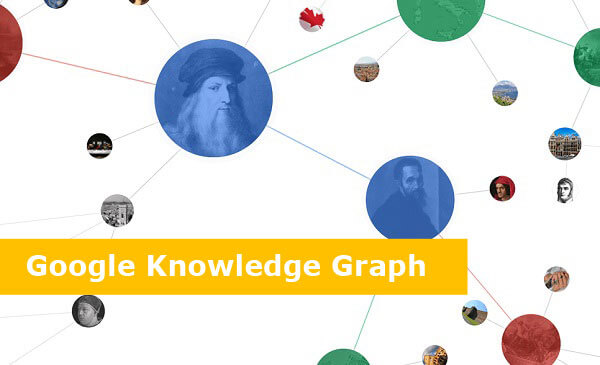Google Knowledge Graph has steadily increased its visibility over the last few years, showing up occasionally alongside Google Snippets at first and then becoming a regular feature in the SERPs. Because it’s rare today to view a search engine results page for a person, place or thing and not see a Knowledge Graph, optimizing for this search feature is an SEO trend we’re seeing for 2018.
Google has been giving more real estate to the Knowledge Graph in order to provide to the most value to users during search. While it’s not exactly clear how Google determines the trustworthiness of information it includes in its Knowledge Graph (some is pulled from Wikipedia), the rise of the feature and its prominence on search results pages gives enough reason to focus on it.
The Beginnings of Google Knowledge Graph
Google Knowledge Graph launched in May of 2012 as a system that brought together facts about people, places and things. It served to connect these entities to provide answers for users instead of merely links.
The system works well as a box of information that gives direct answers to users’ queries, but it also churns behind the scenes to improve Google search relevancy. Google’s goal has long been to take search from “strings to things.” This is one of the primary reasons for its Hummingbird update, and for RankBrain.
To make vision become reality, Google and its engineers needed to map connections between data and then present it in “real world context.” This effort is now what we know as the Google Knowledge Graph.
Google set out to develop a “massive graph of real-world things and their connections, to bring more meaningful results.” The results is when users search for information, they’re no longer forced to sift through a dozen links to find relevant answers to the top queries.

Google Knowledge Graph in Search
As an example of Google Knowledge Graph’s ability to provide focused answers, imagine you want to find out more about New York City. You type “New York City” into the search bar and end up with roughly 10 links along with some Top Stories and a Knowledge Graph. The links point to a variety of websites offering information about travel, geography, demographics and crime statistics in New York City. To explore it all before Knowledge Graph, you’d have to click on each one.
Now, you get a snapshot of the many facets of New York City including:
- A geographic overview including major landmarks
- The name of the mayor (who is currently trending)
- Weather
- Local time
- Population
- Sponsored city events
- Area colleges and universities
- Related searches
All of this is available by just typing 3 words into a search bar. It’s a nice chunk of contextual information that highlights data Google thinks you’d be interested in learning about based on your query.
If marketers look closely at the cards that show up in the Knowledge Graph, they can get a pretty good idea of what Google thinks is valuable to users. SEO professionals can use this information to deliver more relevant results across all content and earn greater visibility.
Types of Cards Used in the Knowledge Graph
There are several types of cards (categories of information) that Google includes in its Knowledge Graph. Each of them contains specific data that Google believes best relates to the searcher’s intent. There aren’t cards for every category you might think of. But, there are some popular types that show up including:
- Weather
- Images
- Tweets
- Sports scores
- Map locations
- Businesses
- People
The categories themselves might not seem so unique, but what’s important is that the information that appears in these categories stands out. Meaning, if you can get your brand to be visible in any of Google’s Knowledge Graph cards, you have a good chance of significantly increasing traffic to your website.

Using Google Knowledge Graph to Boost Rankings
We recommend marketers look at the content displayed in Knowledge Graphs related to their industry and offerings. You can use what you see to create a smart, targeted campaign for your content that addresses what Google thinks users want to know.
In addition to giving you guidance on content strategy, viewing Knowledge Graphs can offer insights into how your brand might show up in the various knowledge cards.
There’s no foolproof way to get featured in a knowledge card, so there won’t be a specific step-by-step process for you to follow. Remember, Google’s Knowledge Graph is about mapping relational connections, so each query offers contextual results that are likely impossible to predict. But, you can increase your chances of showing up on a knowledge card by focusing on:
- Schema markup – Since Google is essentially a database, it makes sense that it prefers structured data to unstructured data. Anyone who has ever tried to work with a spreadsheet can understand that poor data is hard to deal with, whereas clean data is easy to organize. Schema markup is the language that helps Google decipher the content of a website. If you’re not already paying attention to Schema markup as part of your SEO strategy, it’s important to start now.
- Contextual content – Most marketers know that creating good content is critical, but many don’t know exactly what makes content good. Google’s Knowledge Graph is shining the light on what it believes is good content. The search engine giant aims to provide users with information that covers that basics of a topic but that also is authoritative, timely and relevant – meaning it appears to the user when they need it.
If you want to show up where users are searching (that’s the goal of SEO), take some time to understand Google’s Knowledge Graph. Think about how you can create content that’s technology and people friendly. If you do, you’ll have drastically improved your chance of enjoying a presence in the Knowledge Graph, where visibility will be focused for quite a while.
Need help with any part of your SEO plan? Contact Galileo Tech Media.


